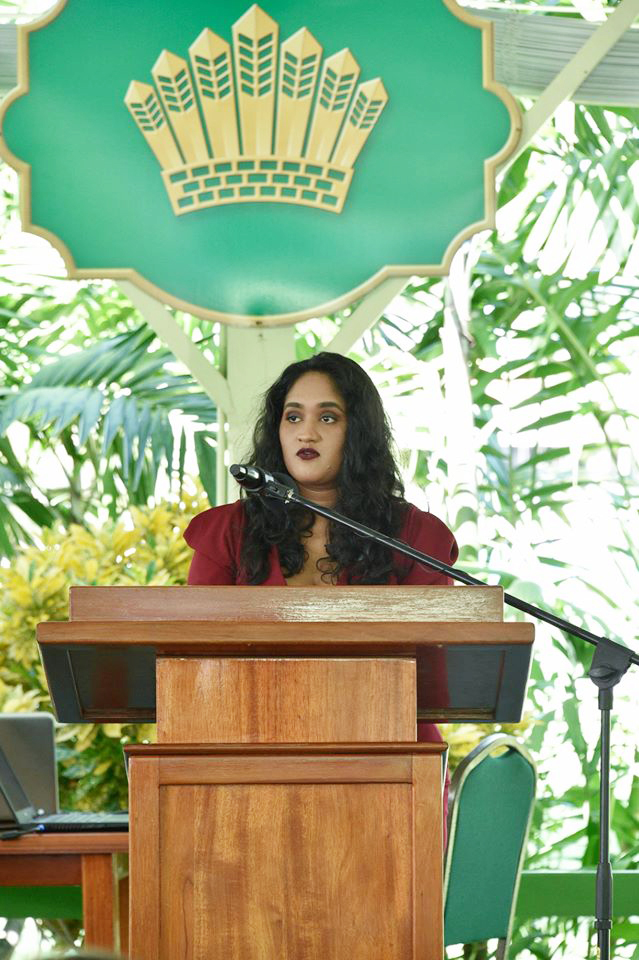Advertisements from both the state and private sector are vital for the survival of the independent press, for which reductions pose a serious threat, according to President of the Guyana Press Association (GPA) Nazima Raghubir.
In her address at President David Granger’s annual media brunch on Sunday, Raghubir stressed that the economic viability of media entities continues to be threatened as they are faced with shrinking revenue bases.
“The advertising pie, of which most of us depend on, continues to shrink, threatening the existence of true and independent media in our growing democracy,” she pointed out. While some organisations have been able to sustain themselves through evolution, many across the world are challenged to stay afloat. “The viability of news media organisations requires conditions that make it possible for us to earn and manage resources that keeps us active,” she highlighted.
With that in mind, she implored advertisers, both state and private, to consider what a true independent media can mean for this country. She added further that few media houses have managed to diversify and ride the wave of changes in the industry while others have missed it. But while solutions may lie in implementing better business models, revenue is still needed to make the changes. Her comments came even as Stabroek News has been grappling with the impact of a cut in state advertising by the Department of Public Information (DPI), which the newspaper believes is an attempt to muzzle the newspaper.
The DPI instituted the cut after the newspaper had temporarily stopped accepting the placement of ads because of a significant outstanding debt of over $22 million. After DPI substantially reduced its debt, Stabroek News invited it to resume advertising normally for the month of August but this did not occur. However, DPI in December increased its allocation to the newspaper. For December, DPI placed roughly 5,585 column inches of ads with the four daily newspapers. The Guyana Chronicle accounted for 39% of this amount, the Kaieteur News 37.7%, Stabroek News 20.9% and the Guyana Times 2.2%.
Meanwhile, earlier in her address, Raghubir noted that the landscape of the press in Guyana since its existence in the 1790s has changed significantly, including going from a time when the then British Guiana had 40 newspapers to present day with four daily newspapers.
“Much has changed since then. Newspapers are now online, and the press as we know it covers a multitude of mediums that include radio, television and online news. There is social media,” she said, while also noting that news is consumed differently now as audiences require that it almost be
instantaneous. With elections due to be held soon, Raghubir called on journalists and media houses to provide impartial and factual information on any event that is reported on.“Our roles are much more different than those of social media commentators. We are to provide factual and unbiased information to our readers and audiences. This means… we have to put our fact checking journalism skills to use, ask questions, clarify, research, ensure there is a right of reply, provide that balance,” she advised, while reiterating that the fight against disinformation remains a tough challenge for the press.
She further urged journalists to ensure that they remain independent and that their work cements social cohesion rather than fractures it.




